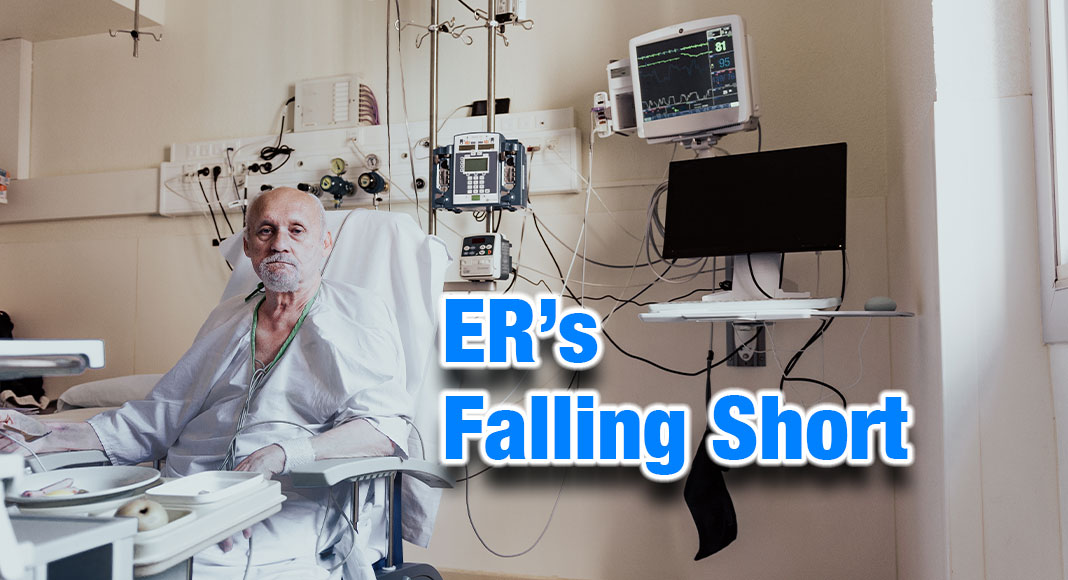
Mega Doctor News
By Florida Atlantic University
Newswise — The rapid growth of the geriatric population in the United States translates to more emergency department visits and associated complications from injury and disease. To address this challenge, in 2014, the Geriatric Emergency Department (GED) Guidelines were published and endorsed by four major medical organizations: the American College of Emergency Physicians, American Geriatrics Society, Emergency Nurses Association, and Society for Academic Emergency Medicine.
The multidisciplinary guidelines characterize the complex needs of the older emergency department patient and current best practices, with the goal of promoting more cost-effective and patient-centered care. These recommendations necessitate increased staff, resources, and education.
Unfortunately, according to researchers from Florida Atlantic University’s Schmidt College of Medicine and collaborators, most of the emergency departments in the U.S. and worldwide do not provide the level of service recommended by the GED Guidelines and for now, the guidelines should only be termed as “aspirational.”
They have published an article in the Journal of Emergency Medicine, which also will be published in the Journal of the American Geriatrics Society, as a result of a panel discussion of emergency medicine physicians and geriatricians at the 2021 American Academy of Emergency Medicine’s Scientific Assembly.
In the article, the authors explore three high-impact geriatric emergency department clinical conditions (delirium, falls and polypharmacy) to highlight guideline recommendations, challenges and opportunities, and discuss realistically achievable expectations for non–GED-accredited institutions.
The authors explain that delirium is common and frequently missed in older patients in the emergency department; fall prevention assessment in the emergency department is rarely completed; and polypharmacy (simultaneous use of multiple drugs) in geriatric patients in the emergency department is a major problem that needs greater attention from the care team.
“The GED Guidelines make specific recommendations regarding evaluation protocols, nurse and physician education, emergency department infrastructure, quality improvement dashboard metrics, optimal staffing, and follow-up care,” said Richard Shih, M.D., senior author and a professor of emergency medicine, FAU Schmidt College of Medicine. “The recommendations are extensive and most emergency departments before the guidelines as well as now have neither the resources nor hospital administrative support to provide this additional service.”
The authors describe that about 10 percent of older adults in the emergency department experience delirium, but it is only recognized in approximately one-third of cases. The GED Guidelines provide consensus-based best practice recommendations to identify delirium through an evidence-based and standardized cognitive assessment screening process. Screening requires dedicated personnel to conduct assessments, additional time to document delirium symptoms or screening results in the medical record, and personnel to monitor for quality improvement purposes. They say that few emergency departments seeking American College of Emergency Physician’s geriatric emergency medicine accreditation have developed delirium protocols.
Thirty percent of adults 65 and older fall each year. Unintentional injury is the sixth leading cause of death for older persons, with falls being the number one cause. After a fall, older adults in the emergency department have about a 30 percent greater risk of functional decline and depression at six months after the event. The GED Guidelines recommend a comprehensive approach to evaluating and managing falls. The authors point out that although GED Guidelines for fall prevention reflect best practices, they are not completed in most emergency department cases.
Geriatric patients also have more illnesses and, consequently, are prescribed more medications. Although accounting for only 13 percent of the population, 33 percent of prescriptions are written for this age group. The most common drugs causing adverse effects in older patients coming to the emergency department include anti-coagulants, hypoglycemics, cardiovascular medications, psychoactive medication and antibiotics. The authors say that given the challenges of rapidly identifying medication issues in the emergency department, a more practical approach of focusing on a manageable list of higher used “red flag” medications may be appropriate. They caution that deprescribing medications is not easy to accomplish, especially in a busy emergency department. It requires a systematic thought process and carefully considering multiple aspects of each medication.
“These GED guidelines are intended for every adult emergency department to ‘geriatricize’ care; this is not intended solely for those emergency departments designed specifically for older adults, which only exist in a handful of locales,” said Joseph G. Ouslander, M.D., co-author, senior advisor to the dean and a professor of medicine, FAU Schmidt College of Medicine. “When implemented across health care systems with appropriate levels of support and resources, these guidelines and efforts will help emergency departments and staff to better care for our aging population.”










